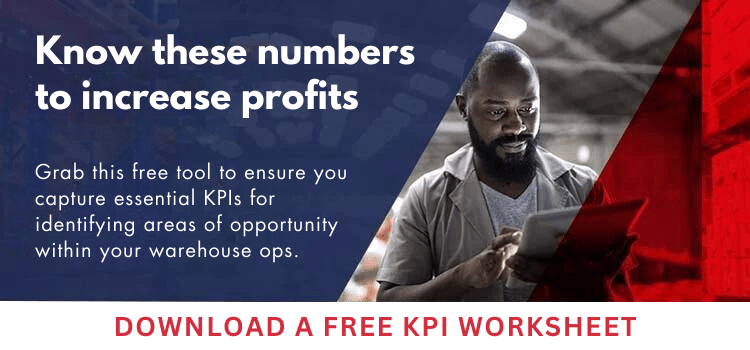In performing warehouse assessments on companies and trying to find ways to improve storage capacity and increase the total order throughput, one of the major alternatives to moving to a new facility is to look at adding mezzanines to the existing building.
Planning and opening a new warehouse is expensive in terms of capital and one-time expenses. It can also take 12 months or longer to move if you can find an existing warehouse that meets your requirements.
If the new facility is more than 30 miles from your existing facility, you may lose hourly workers and some managers, creating labor challenges. Adding a mezzanine can increase space in your existing warehouse.
A mezzanine is a structure that is installed above an existing workspace to add additional space. They are installed over low height operations such as existing receiving or shipping.
Functions which we see implemented on mezzanines include automated pick modules; product storage; offices; shipping and manifesting stations which deliver outbound packages to various shipping carrier lines; specialized work platforms; and catwalks installed over highly automated sortation lines to give visibility to operations.
Read also “How to Develop A Plan to Move Your Fulfillment Center”
As you explore adding mezzanines to your warehouse or distribution center, here are 10 considerations you need to answer:
Establish the objectives
Detail your design objectives, changes in product flow, automation and conveyors. Projects where you are moving storage and processes to mezzanines often mean big changes to product flow and addition of conveyors and MHE. These changes need to be factored into your design.
Here is a case study where adding a mezzanine and conveyors did not make operational and MHE sense. A gift retailer added 25,000 SF of mezzanine for storage of light weight fragile products (e.g. figurines, china, stemware, etc.).
Orders were picked to carton and put on a spiral conveyor to move cartons down to the packing and shipping areas on the ground floor. The products were lightweight and about every 10 cartons gained too much momentum from the spiral conveyor, fell off and broke.
The spiral conveyor was designed in a compact way to maximize the square footage of the mezzanine. After numerous modifications to the spiral conveyor, the problem was alleviated. Look to the vendors to certify the design objectives.
Consider the following aspects will planning, designing and implementing mezzanines in your facility:
1. Ask the landlord. If it’s a leased facility, ask the landlord’s permission. It is not uncommon to gain permission to add a mezzanine to a leased space. Your company may have to pay for the investment in total or on a shared basis.2. Understand your local building codes. As you define your fulfillment objectives and consider the use of mezzanines, consult your county early. Most have regulations about how they can be used. Some states define work platforms differently than mezzanines.
They may dictate what operations and products can be stored on mezzanines. Additionally, the county will most likely have fire protection and safety regulations your project must address. Research and define these requirements early in the process.
3. Develop a detailed project plan. Ask the vendor to develop a detailed work plan and schedule. Generally, mezzanines can be installed in 9 to 12 weeks of project sign-off of a detailed drawing and ordering.
4. Integration of the plans into your existing building. Will the mezzanine design drawings be integrated with the CAD drawings of the building? This is the only way you can truly pinpoint bottlenecks and flow issues.
5. Planning multi-level operations. What is the MHE (e.g. forklifts) and automation required to move product and orders between levels? What changes to lighting and fire protection are required with multi-level operations?
6. Project management. Identify what party will take responsibility - you or the vendor. Is it the mezzanine company, senior fulfillment manager in your company, or do you have a fulfillment consultant heading up the project?
7. Concrete slab thickness and strength. Perform a concrete core sampling to understand how much weight can be supported by the existing floor. What additional steel and concrete work needs to be completed to support the mezzanine?
8. Installation Methodology. How will the installation process proceed? How will disruption of the operation be kept to a minimum?
9. Total project costs. Request the total cost for design and drawings, accessories, freight, steel surcharges and installation. With some projects and companies, there are steel surcharges added to the project cost. You will want to clarify if surcharges will be charged before ordering.
10. Safety concerns. What safety and insurance are required? Considering the mezzanine how many foot steps is it for employees to egress the platform? What county approval and inspection will be necessary?
Pricing Mezzanine Costs with Request For Proposal (RFP)
After you have defined your objectives, write an RFP that itemizes these considerations and identify several qualified bidders. Request an on-site visit before proposal submission to be sure they fully understand the project.
Be sure to ask the vendor to list mezzanine dimensions, load capacities, electrical requirements, bracing styles, coatings and finishes, accessories (such as stairs, gates, handrails, etc.). You’re not looking for a simple price proposal, but a well thought out plan, the investment and how this will benefit your operation.
Mezzanines can often add product storage capacity, increase the order processing capabilities and extend the life of the existing building for your fulfillment operation. It can save capital and be faster to implement than moving to a new warehouse.





SHARE